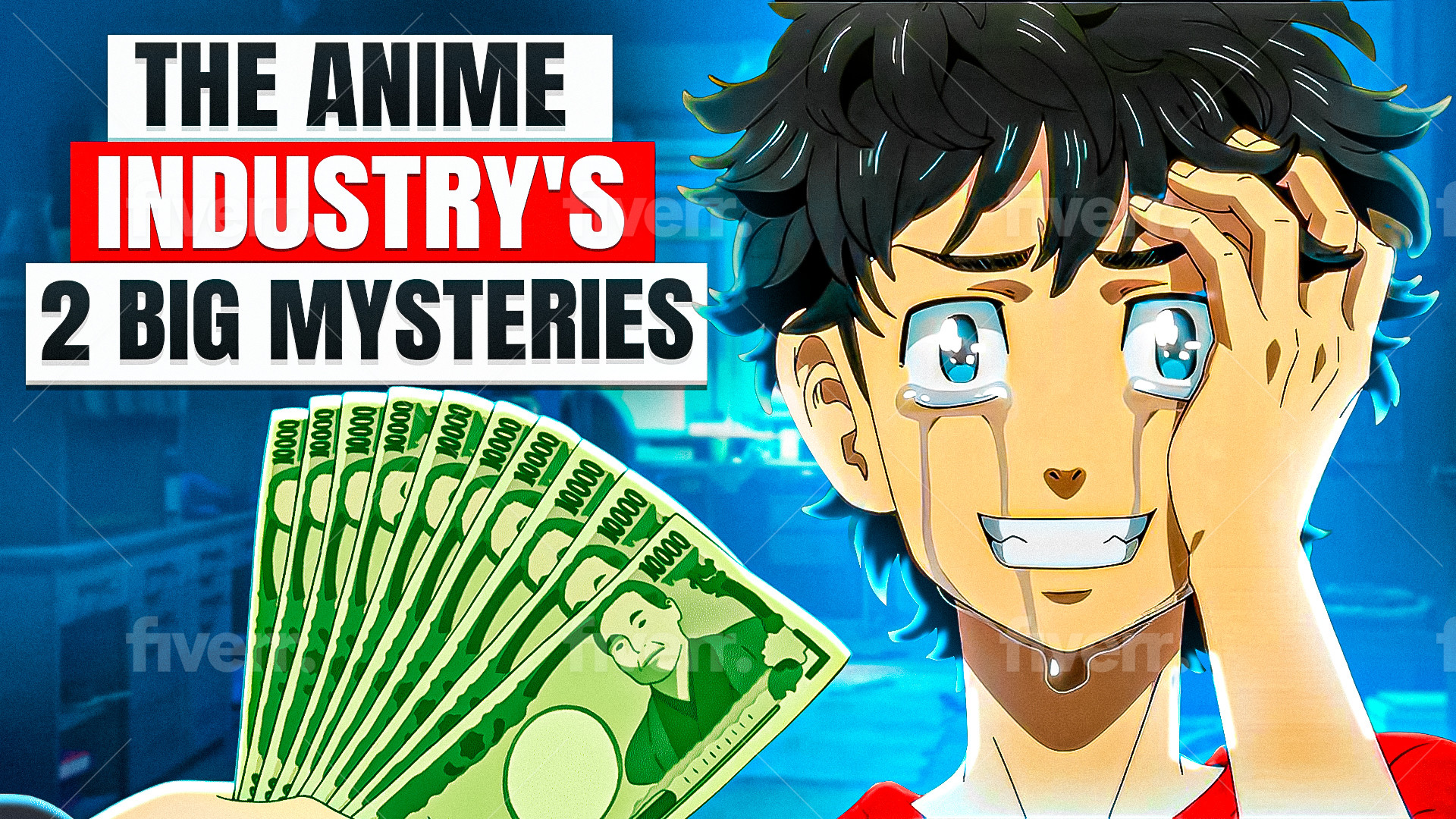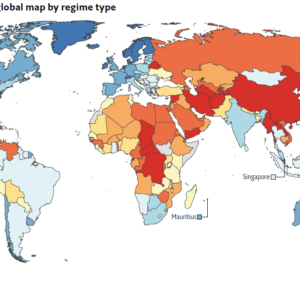There are two big mysteries in the anime industry.
One: Why do many animators in Japan earn just $2 an hour, when animators are constantly in high demand?
And two: How do over 500 separate anime studios manage to survive in Japan, when competition usually turns industries into monopolies?
To solve these mysteries we need to start with the question of wages.
Normally, if there’s a shortage of workers in a technical field, you’d expect wages to be high. It’s basic supply and demand. Yet anime has seen the opposite, with animators paid less than a quarter of Tokyo’s minimum wage, despite being in high demand. What’s going on?
The exploitation of animators is nothing new. As soon as the industry was put on a professional footing, in the 1930s, the bulk of the work was done by people who were underpaid and overworked.
Before the introduction of cell based animation, most animations had been created by single artists or small groups, who would paint onto woodcuts or white sheets. These were highly skilled professionals who could perform every part of their craft.
The introduction of affordable film cells in 1934, when Fuji Film began manufacturing them domestically, marked a shift in anime’s production process however. Film cells could be stacked to create pictures, meaning that only the part of the picture that changed between frames had to be redrawn. With that, anime was no longer a field for artisans but became a factory line for pumping out art, with the task of animation divided into separate disciplines.
The senior artists could now focus on the most creative aspects of the work, such as storyboarding and creating a few key frames to map out each sequence of animation, while the mundane and time consuming aspects, such as tracing and inking the drawings, could be done by lower paid staff.
These lower paid, menial jobs were almost exclusively done by women.
The gendered nature of the work isn’t surprising. For centuries, women’s work has been systematically undervalued within capitalist societies.
Starting with the Industrial Revolution, women were shunted into the unpaid, domestic labour of housework and child rearing, so that their husbands could go out and earn a wage. As a result of women’s labour being unpaid, it came to be seen as less valuable. This allowed business owners to pay women less when they did enter the workforce.
From the 1930s, through to the 1960s, women went into the animation studio to complete their work in the artistic sweatshops of the time. During this period, the anime industry shifted its focus from making government propaganda to making entertainment movies, but the work of the animators stayed the same. Then 30 minute anime shows made it onto TV, and that changed everything.
TV executives had long resisted the idea of a 30 minute animated series, due to the cost. But manga artist Tezuka Osamu managed to convince Fuji Television to commission his series Astro Boy, by selling it at a loss. Tezuka figured that he could make up the difference by selling action figures and other merchandise.
He was right. Astro Boy became a big hit and Tezuka turned a profit through selling merchandise. With that, a new business model was born: shows would sell to TV broadcasters at a loss and make their profit from merchandise sales. Anime’s famous media mix had arrived.
The success of Astro Boy led TV networks to commission a slew of new anime. With so many shows needing a weekly episode, animators were suddenly in huge demand. This labour shortage created opportunities for skilled animators to establish their own specialist studios, and take commissions from the larger studios. In turn, these small studios often subcontract work out to freelancers or to even smaller studios.
Prior to the 1960s, when animation workers gathered at the large studios each day, they had a chance to get to know each other and were able to plan labour actions together. In 1961, for example, the labour disputes at Toei made national news and drew widespread attention to the terrible working conditions.
Workers in the industry were considered at risk of developing “anime syndrome”: health problems caused by longd daysand nights of labor-intensive work in cramped spaces, with poor diets, no breaks and no sleep.
With the new subcontracting boom in the 1960s, workers got split up into smaller groups, with many working at home, completely isolated from their peers.
Just as with gig workers and other freelancers, it became much more difficult for animators to organize collectively to fight for their rights. Most simply had no way to find each other.
Worse still, home study courses started selling housewives on the idea that animation was work that they could do part-time, around their household tasks.
While this gave some women, who were otherwise unable to work, the opportunity to earn a little income in their spare time, those women were usually hyper exploited. They were often willing to accept lower than average wages, since they had few other earning opportunities. They also had less incentive to fight for decent pay and conditions, since animating wasn’t a major source of family income.
Today, most TV anime shows are created and owned by production committees, which are made up of various media companies, including broadcasters,
publishers, music publishers, distributors, and advertising firms. The production committee hires a major studio to act as the primary contractor, and together they set the budget and schedule for the production. After that, the studio makes it happen.
This production committee format allows the businesses involved to diversify their investment between many projects, which minimizes their risk. The problem, from the animator’s point of view, is that the production committees are able to lowball the budgets, based on the selling price of the show to the broadcaster, while keeping all the profits from licensing and merchandise for themselves. This means that the major studios can insist that their budget is tiny when setting wages and prices for subcontracting work.
Helping to suppress wages further, the anime industry started to rely on a pool of cheap foreign labour from other East Asian countries, such as South Korea and China. This became increasingly common during the 70s, as a way to avoid labour disputes in Japan.
Pitting workers from different countries against each other has helped to suppress wages in all countries involved.
When changing labour conditions allowed workers in South Korea to demand higher wages in the late 80s and early 90s, the anime industry quickly stopped sending work there. But once the price of labour became cheaper again, the studios began exporting work to South Korea once again. The moral of the story? If workers in any country ask for too much, they can easily see their jobs disappear.
So here we have both mysteries solved. Production committees and major studios keep wages down by turning animation into a gig economy, and by pitting workers from different countries against each other in a competition for jobs. At the same time, the shortage of labour in the anime industry has allowed skilled animators to set up their own studios, to take on specialist work, in order to squeeze as much as they can out of the system. This has led to the creation of many studios, which subcontract to freelancers or pay their staff peanuts. This setup isolates workers and prevents them from organizing effectively.
This leaves us with a conundrum: how do we finally ensure that animators get paid a livable wage?
Some commentators on the industry have said that the way to solve this is for production committees to give animators a share of the royalties. The problem is that these businesses have no incentive to do that. Their primary concern is to maximize their own profits, so keeping wages down suits them just fine.
The capitalist economic system, which is based on profit seeking, will always incentivize these kinds of arrangements. Whenever businesses are able to, they’ll pit workers against each other, either by uberizing their jobs, or by making them compete with workers in other parts of the world.
The only way around this is to transition to an economic system that puts human well-being before profit. Until we transition to socialism, the organizations that hire workers are always going to try to push their wages down.
References:
Shiage and Women’s Flexible Labor in the Japanese Animation Industry, Feminist Media Histories, Vol. , Number, pps 115–141 by Diane Wei Lewis
https://www.liveabout.com/brief-history-of-anime-144979
https://www.rightstufanime.com/post/global-history-of-anime
https://www.animenewsnetwork.com/feature/2017-06-07/how-polygon-pictures-is-changing-the-3d-anime-industry/.117129
20+ Anime Statistics & Facts: How Many People Watch Anime? (2023)
https://www.vox.com/platform/amp/culture/2019/7/2/20677237/anime-industry-japan-artists-pay-labor-abuse-neon-genesis-evangelion-netflix
https://kotaku.com/working-conditions-in-the-anime-industry-1832891765
https://kotaku.com/average-anime-industry-salaries-get-depressing-1774852881





